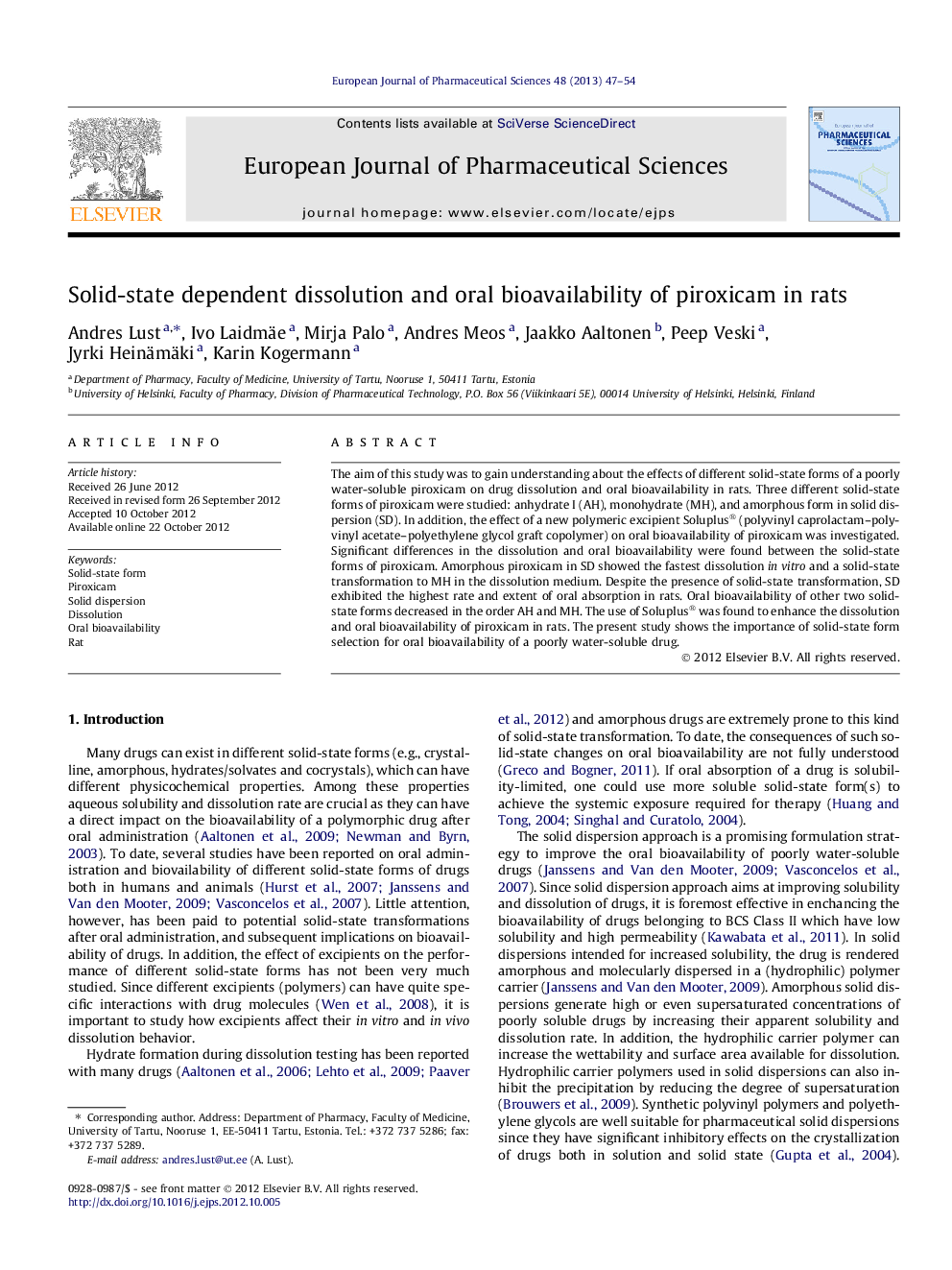| Article ID | Journal | Published Year | Pages | File Type |
|---|---|---|---|---|
| 2481017 | European Journal of Pharmaceutical Sciences | 2013 | 8 Pages |
The aim of this study was to gain understanding about the effects of different solid-state forms of a poorly water-soluble piroxicam on drug dissolution and oral bioavailability in rats. Three different solid-state forms of piroxicam were studied: anhydrate I (AH), monohydrate (MH), and amorphous form in solid dispersion (SD). In addition, the effect of a new polymeric excipient Soluplus® (polyvinyl caprolactam–polyvinyl acetate–polyethylene glycol graft copolymer) on oral bioavailability of piroxicam was investigated. Significant differences in the dissolution and oral bioavailability were found between the solid-state forms of piroxicam. Amorphous piroxicam in SD showed the fastest dissolution in vitro and a solid-state transformation to MH in the dissolution medium. Despite the presence of solid-state transformation, SD exhibited the highest rate and extent of oral absorption in rats. Oral bioavailability of other two solid-state forms decreased in the order AH and MH. The use of Soluplus® was found to enhance the dissolution and oral bioavailability of piroxicam in rats. The present study shows the importance of solid-state form selection for oral bioavailability of a poorly water-soluble drug.
Graphical abstractPiroxicam exhibited solid-state dependent dissolution and oral bioavailability. Amorphous piroxicam in solid dispersion (SD) showed the fastest dissolution in vitro and the highest rate and extent of oral absorption in rats. Dissolution and oral bioavailability of the other two solid-state forms of piroxicam decreased in the order anhydrate I (AH) and monohydrate. Soluplus® enhanced the dissolution and oral bioavailability of piroxicam in rats.Figure optionsDownload full-size imageDownload high-quality image (107 K)Download as PowerPoint slide
